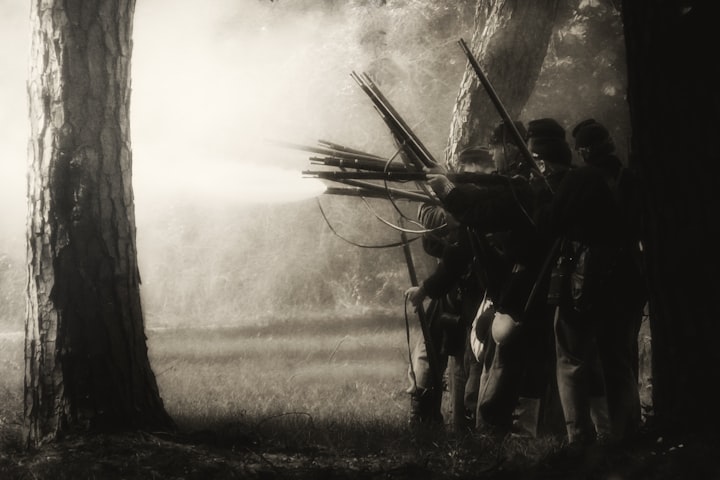Meaning Will Follow
The Massacre at Ebenezer Creek

In his book, If the South Had Won the Civil War, MacKinlay Kantor makes three major historical changes that ensure a Confederate victory: Lincoln is not assassinated, Ulysses S. Grant and General Sherman are killed in the war, and the Union Army is defeated at Gettysburg.
The book first appeared in the November 22, 1960, issue of Look magazine. Some people took exception to the presentation. They wrote letters attacking Kantor because that wasn’t how the Civil War went. Just think of the comments he would have gotten if Facebook had been around.
An actual event that goes by the slogan “forty acres and a mule” memorializes perhaps the largest reparation for a wrong by a government that ever took place. By the way, the slogan was appropriated by Spike Lee for the name of his production company, “Forty Acres and a Mule Filmworks.” But as interesting as that is, it might not have even occurred if not for an earlier event.
First, returning to actual events – Lincoln was assassinated, neither Grant nor Sherman was killed in the war, and the North won at Gettysburg – we pick up where Sherman is burning his way through Georgia.
Sherman’s army of 62,000 marched toward Savannah followed by a rear guard commanded by Maj. Gen. Jefferson C. Davis. Perhaps growing impatient by the 5,000 freed slaves following and dragging them down, Davis decided that possibly laid the groundwork for “forty acres and a mule” to materialize.
At Ebenezer Creek, Davis had his engineers assemble a pontoon bridge to allow the troops and supplies to cross the creek. The slaves were told to wait until all the troops and supplies were across the creek, ostensibly because of enemy fire ahead of them. But as soon as the last of the federal troops crossed, the pontoons were removed. Thousands of hungry women, children, and old men were left stranded.
It was December 9, 1864. Ebenezer Creek was 165-feet-wide, 10-feet-deep, and freezing. The refugee slaves pleaded with the Union soldiers for the protection they had been promised. To make matters worse, closing in from behind was the Confederate cavalry led by Maj. Gen. Joseph Wheeler. The former slaves were helpless, unarmed, and desperate. They attacked the cold, muddy creek with their bodies. Many drowned, and those who hadn’t tried to cross were overrun by Wheeler’s cavalry to be shot or slashed to death. The unfortunate survivors were returned to slavery.
An officer in Davis’ command wrote about the massacre to his congressman who apparently leaked it to the press. Secretary of War Edwin M. Stanton, mostly embarrassed by the bad publicity, traveled to Savannah to meet with Sherman about the incident.
The online article, Betrayal at Ebenezer Creek, discusses some of the motivations of the main players, not all of which were in the least bit admirable from a humanitarian view. Even so, the times and personalities were complex. As one example, one of Davis’ commanders, General Oliver Otis Howard was the founder of Howard University, a theological seminary for educating black clergymen. Howard was also Commissioner of the Freedmen’s Bureau, initiated by President Lincoln to assist former slaves in the South. Following Lincoln’s assassination, the bureau gradually lost funding and support.
Secretary Stanton met with Sherman who in turn met with 20 representatives of the black community – 16 of whom were former slaves – on January 11, 1865. When asked what could be done for their people, the representatives answered: Give us land.
Consequently, General Sherman issued Special Field Order No. 15 to authorize confiscating a strip of coastal land from its white owners from Charleston, South Carolina to Jacksonville, Florida – 245 miles long and about 30 miles wide – over 400,000 acres. This land was only for autonomous black communities, as it had been agreed that whites would not be allowed to settle there. The order stated that freed slaves were to receive 40-acre allotments, thus the slogan – although the mule came later – “forty acres and a mule.” By June 1865, about 40,000 former slaves – freedpeople – had settled on the land.
Two months earlier, in April 1865, Abraham Lincoln was assassinated. Andrew Johnson, no strong supporter of reconstruction or reparations, became president. Within a year after Sherman issued Special Field Order No. 15, President Johnson gave the confiscated land promised to the freed slaves back to the original owners. If not for the killing of Lincoln, Sherman’s order may have stayed in effect long enough to make a difference. We’ll never know. What we do know is what happened at Ebenezer Creek that Friday in December 1864. Its full meaning may not be understood, but now it exists. Meaning will follow.
_________________________
Resources:
Betrayal at Ebenezer Creek. (2006). Retrieved 23 March 2021, from https://www.historynet.com/betrayal-at-ebenezer-creek.htm
Black Codes and Pig Laws | Slavery by Another Name Bento | PBS. (2021). Retrieved 23 March 2021, from https://www.pbs.org/tpt/slavery-by-another-name/themes/black-codes/
McCurdy, D. (2007). Forty Acres and a Mule •. Retrieved 23 March 2021, from https://www.blackpast.org/african-american-history/forty-acres-and-mule/
(1865) General William T. Sherman's Special Field Order No. 15 •. (2008). Retrieved 23 March 2021, from https://www.blackpast.org/african-american-history/special-field-orders-no-15/






Comments
There are no comments for this story
Be the first to respond and start the conversation.